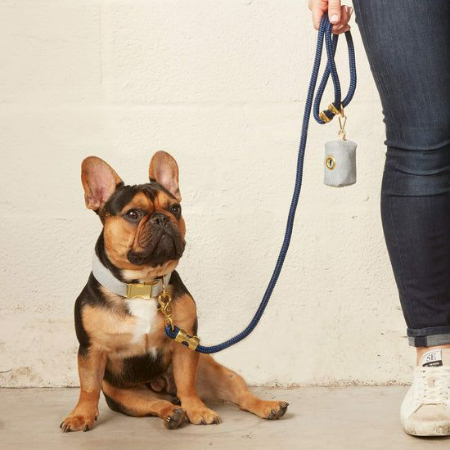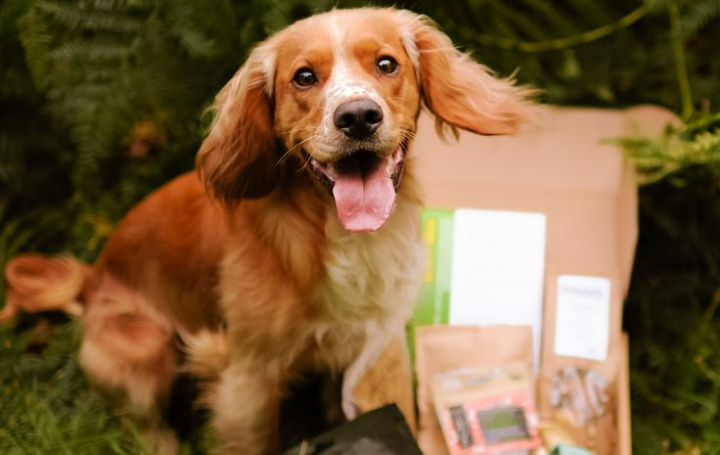The Environmental Impact of Dog Ownership: How to Minimize Your Carbon Pawprint
Owning a dog brings joy, companionship, and love into our lives. But, just like everything else, it also has an impact on the environment. From the food they eat to the waste they produce, our furry friends can contribute to our carbon footprint.
However, by making thoughtful choices, we can minimize the environmental impact of having a dog. Let’s explore some easy and simple ways to reduce our “carbon pawprint” and still enjoy the wonderful company of our four-legged friends.
1. Choose Eco-Friendly Dog Food
The world and your dog’s health are affected by what they consume. Eco-unfriendly components are used in the production of a lot of commercial dog foods. In addition to requiring a lot of land and water, the production of dog food containing meat can result in increased greenhouse gas emissions.

Choose dog food products that emphasize sustainability if you want to make a more eco-friendly decision. Plant-based or sustainably produced components, which generally have less of an impact on the environment, are frequently used by these brands.
As an alternative, consider preparing homemade dog food with seasonal, locally sourced ingredients. This strategy lessens the overall carbon footprint in addition to packaging waste. To be sure that your dog is getting all the nutrients it needs, it’s crucial to speak with your veterinarian.
2. Use Biodegradable Waste Bags
Dog poop must be cleaned up, but the plastic bags we use so frequently can take hundreds of years to decompose in a landfill. In addition to harming wildlife, these bags add to pollution.
Using biodegradable poop bags is an environmentally friendly option because they break down faster than regular plastic bags and cause less damage to the environment. These bags’ quicker breakdown and lower environmental effects are attributed to their composition of elements like cornflour.
Using flushable bags, which can be disposed of straight in the toilet and guarantee that the waste is handled correctly, just like human waste, is an even more environmentally friendly choice.
3. Choose Sustainable Pet Products
Our dogs utilize a lot of items that affect the environment, like beds and toys. More garbage is produced since many of these products are neither long-lasting nor composed of non-recyclable materials.

Investing in long-lasting toys crafted from natural or recycled materials is a great way to make ecologically conscious decisions for your pet. Because these premium toys are long-lasting, there is less waste and less need for frequent replacements.
To further promote sustainability, choose collars, leashes, and pet beds made of hemp, organic cotton, or recycled textiles. Not only are these environmentally friendly choices safer for your pet, but they are also better for the environment.
4. Reduce Energy Use
Dogs adore their comfort, much like humans do. However, maintaining a comfortable environment for our dogs in our homes can occasionally result in increased energy usage, particularly for heating and cooling.
Make a more environmentally friendly decision by switching to energy-efficient heating and cooling systems and programming your thermostat to regulate itself when you’re not home. In doing so, you save electricity without sacrificing your pet’s comfort.
Furthermore, make an effort to use natural light during the day rather than leaving lights on for your pet; this small change can save a lot of energy.
5. Adopt, Don’t Shop
One of the greenest decisions you can make is to adopt a dog from a shelter or rescue organization. Giving a dog a second opportunity through adoption also helps lessen the need for breeding, which frequently entails unethical breeding methods.

Adopting a dog from a nearby shelter can be a more environmentally friendly decision. This not only lessens the number of animals in shelters but also lessens the need for puppy mills, which are frequently linked to unethical breeding methods and detrimental effects on the environment and animal welfare.
6. Spay and Neuter Your Dog
An excessive number of stray dogs can have negative social and environmental effects due to uncontrolled breeding. Dogs on the loose can hurt local species, carry illnesses, and add to pollution.
Get your dog fixed or spayed to make a more environmentally friendly decision. This crucial action helps avoid unintended litters, which in turn manages the dog population and eases the burden on the environment and animal shelters.
7. Recycle and Repurpose
Check to see if outdated dog accessories can be recycled or used again before discarding them. You can make something fresh out of several dog toys, leashes, and accessories.
Reusing and recycling pet supplies is one way to choose more sustainably. Find out if your neighborhood recycling center takes things like plastic toys and metal dog tags by calling them. Get inventive and turn used dog blankets into brand-new beds or toys.
Additionally, you may upcycle worn-out dog beds with old garments inside to create a comfortable new bed for your pet, or you can braid old t-shirts into tug toys.
8. Walk Locally
Your carbon footprint may grow if you drive to distant parks or trails. Try to walk your dog whenever you can in the neighborhood instead. It helps you explore new areas of your neighborhood and is also better for the environment.
Investigate the parks and trails around for a more environmentally friendly option. This not only helps you and your pet enjoy the fresh air and new locations in your neighborhood, but it also lessens your carbon footprint.
Conclusion
Being a good dog owner involves more than simply giving your pet love and attention; it also involves being environmentally conscious. Our carbon footprint can be lowered and the environment can be preserved for future generations by adopting little, environmentally beneficial decisions.
It makes a difference to choose sustainable dog food, use biodegradable trash bags, or adopt from a shelter, every little bit counts. Let’s all do our share to improve the environment for the benefit of the earth and our furry buddies!
Doglime for more dog-related information.
Tags










